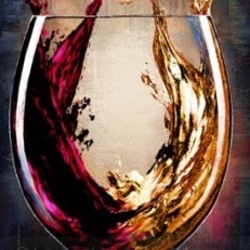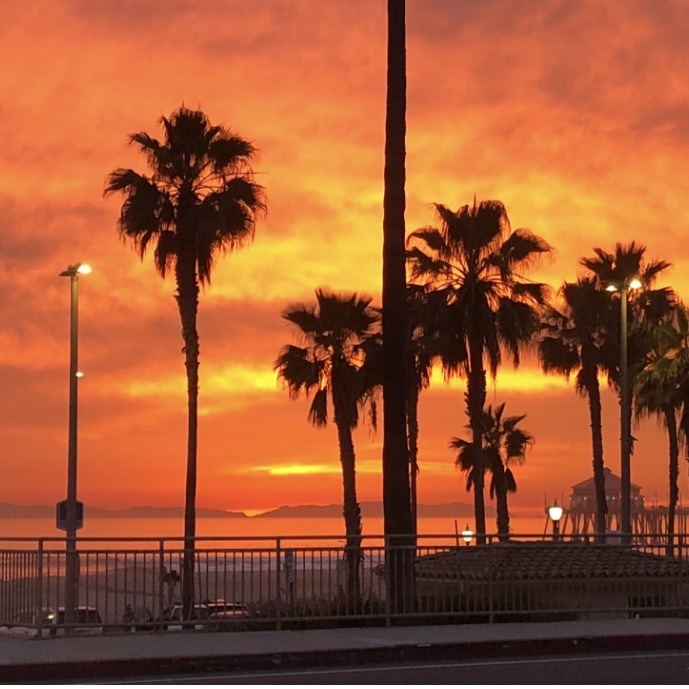Chateau Trolliet Lafite
Domaines Barons de Rothschild Lafite
Gran Reserva Amancaya Mendoza Malbec Cabernet Sauvignon 2015
Ruth’s Chris for Fed ERP holiday party — 8 years ago
Domaines Barons de Rothschild Lafite
Aruma Mendoza Malbec 2015
4/15/17 La Cabrera with Tyson - Buenos Aires — 9 years ago
Château Lilian Ladouys
Saint Estèphe Red Bordeaux Blend 2010
Tried this again, about a year later. Time proved well. The vines of Lilian-Ladouys are found a stone's throw from the Graves of Cos d'Estournel and the Chateau Lafite-Rothschild. Purple, with inky tones. Aromas of black and blue fruit, smoky notes and soft spice. Palate displays black and blue fruits with toasty oak flavors, full body with round tannins. Finish ends with earthy mineral tones. — 9 years ago
Domaines Barons de Rothschild Lafite
Las Huertas Colchagua Valley Cabernet Sauvignon 2015
Great value wine. — 9 years ago
Château Calon-Ségur
Saint-Estèphe Red Bordeaux Blend 2013
"I make wine at Lafite and Latour, but my heart is at Calon"... I can see why Nicolas Alexandre Marquis de Segur said these iconic words after having this wine in my glass. The nose is so inviting with warm spice, cigar smoke, embers, and toast. Raspberry syrup, plums, vanilla, and toffee on the palate. Nice thread of smoke throughout with nice balancing fresh fruit. What an enjoyable wine! 20 months in new oak - obviously the more accessible style the new owners are going for... the Pinot the other night gave an experience, this one tells a story. — 9 years ago
Domaines Barons de Rothschild Lafite
Les Légendes R Pauillac Cabernet Sauvignon Merlot 2012
The first rung on the ladder, DBR's third label with 80% estate fruit. '12 is drinking perfectly today. Classic whiff of menthol, cigar box, violets with mouth coating cassis intensity and a long, tasty finish. Bravo, Diane Flamand.. — 9 years ago
Domaines Barons de Rothschild Lafite
Los Vascos Colchagua Valley Chardonnay 2014
Great wine with or without food, nice clean finish and very flavorful, can't go wrong with this Chardonnay not oaky — 10 years ago
BrisAndes (Domaines Barons de Rothschild (Lafite))
Colchagua Valley Cabernet Sauvignon 2012
Buttery delicious full bodied — 11 years ago
Domaines Barons de Rothschild Lafite
Reserva Los Vascos Valle de Colchagua Cabernet Sauvignon 2011
Strong, good for red meats — 12 years ago
Bodegas Caro (Barons de Rothschild / Catena)
Caro Cabernet Sauvignon Malbec 2012
CARO, alliance between 2 wine cultures (French and Argentine), 2 noble grape varieties (Cabernet Sauvignon and Malbec), and 2 wine families (Domaines Barons de Rothschild (Lafite) and Nicolas Catena). Blend of 75% Malbec & 25% Cabernet Sauvignon. Complex aromas of dark berry fruits, smoke and earthy spice. On palate blackberry, raspberry and sweet cherry, cedar, nuts and burnt cacao. Developed tannins, well balanced on lingering finish ending with espresso and mineral tones. Great but keep in Cellar for few years. — 8 years ago
Domaines Barons de Rothschild Lafite
Los Vascos Colchagua Rosé 2016
Really good! Happy this is in stock in my humble corner market. — 9 years ago
Domaines Barons de Rothschild Lafite
Légendes R Bordeaux Sauvignon Blanc Sémillon 2015
Can definitely taste some acidic notes, not too sweet, and a great balance of dryness. If you prefer a wine not too sweet ava overwhelming, this is a good choice. — 9 years ago
Château Margaux
Premier Grand Cru Classé Margaux Red Bordeaux Blend 1994
When drunk side by side with the 2001 Lafite Rothschild this seemed a little past due. The nose is incredible: cigar box, cedar and leather are predominant. The fruit is secondary but appeared more after a half hour. — 9 years ago
Château Léoville-Las Cases
Grand Vin de Leoville du Marquis de las Cases Saint-Julien Red Bordeaux Blend 1986
Very similar to chateau Lafite — 10 years ago
Barons de Rothschild (Lafite) & Nicolas Catena
Amancaya Gran Reserva Malbec Cabernet Sauvignon 2010
Great value — 10 years ago
Domaines Barons de Rothschild Lafite
Réserve Spéciale Bordeaux Sauvignon Blanc Sémillon
Smooth and wonderful!! Perfect pairing a "tambaqui" — 10 years ago
Domaines Barons de Rothschild Lafite
Los Vascos Casablanca Valley Sauvignon Blanc 2012
Clean, refreshing, not sweet. Slightly effervescent — 11 years ago
Domaines Barons de Rothschild Lafite
Private Réserve Red Bordeaux Blend 2010
チェリーがとても強い、ペッパー、胡椒 — 13 years ago
Domaines Barons de Rothschild Lafite
Blason d'Aussières Corbières Syrah Blend 2016
A well balanced wine. Nice to the palate and easy to drink. — 7 years ago
Château Duhart Milon
Pauillac Cabernet Sauvignon - Merlot Blend 2006
The 06 vintage was more highly praised by the Bordelais than it delivered. That’s not to say, some producers didn’t deliver.
This 06 is not at its peak...still needs a few years. Will it be a wine that blows you away? Not likely but, it will deliver nice fruit, earth & balance. Especially, with a Ribeye.
The nose shows; ripe; blackberries, dark cherries, black raspberries, baked strawberries, dry cranberries & some black plum. Saddle-wood, limestone minerals, dry stones, cinnamon, soft spice, light vanilla, black rich earth, touch of black licorice and red & dark fresh florals.
The body is round and a little lean but puts on weight with food and decanting. The structure, length & tension are falling into place. The fruits are ripe and expressive. Blackberries, dark cherries, black raspberries, baked strawberries, haunting blue fruits, dry cranberries & some black plum. Saddle-wood, touch herbaceous, mint, limestone minerals, dry clay, dry stones, cinnamon, soft spice, cola, light vanilla, black rich earth, touch of black licorice and red & dark fresh florals. The acidity is round and beautiful. The finish is on the leaner side but, well balanced and lasts a full minute. 9.1 without the Ribeye, 9.2 with it.
Photos of, Duhart Milon, Cabernet ready to to be pressed, wine making facilities and their barrel room.
Producer history and notes...the Rothschild family is divided into two sects for lack of a better word. There are the ones that own Mouton Rothschild and Cleric Milon etc. and the other owns Lafite and Duhart. The two sides of the families don’t necessarily get along. However, they are two of the oldest/wealthiest families in recorded history.
Duhart Milon was originally known only as Chateau Milon. At one time the estate was the second wine of Chateau Lafite.
The story about how this came to be is interesting. The owner of Lafite at that time was the Marquis Nicolas-Alexandre de Segur. King Louis XV called him “The Wine Prince” because of his extensive vineyard holdings in Bordeaux. The Milon vineyards were well regarded but, not as good as Lafite, which is how the wine came to be thought of as the second wine for Lafite.
In 1815, the property was considered by some people as a fourth growth Bordeaux wine in the making. In those days, the wine was sold under the name of Chateau Mandavy-Milon. Between 1830 and 1840, the Casteja family inherited the estate.
The label of Duhart Milon, according to family tradition came about from an old legend written about one of their ancestors, Sir Duhart. Sir Duhart, was rumored to have been a pirate for Louis XV. He retired in Pauillac. The “Pirate’s House” on the Pauillac port existed up to the 1950’s. That original building inspired the label for the Duhart-Milon wines.
The Casteja family remained in possession of Duhart Milon until the first part of the 20th century. At the time, Chateau Duhart Milon was one of larger Pauillac estates with around 50 hectares of vines.
In 1937, the result of successive inheritances led to the sale of Duhart Milon. The Left Bank property went through five different owners in just 25 years. As well, the vineyards were split up and with the frost of 1956, the quality of Duhart Milon continued declining until the Rothschild family purchased the property in 1962.
At that time of the sale, Chateau Duhart Milon included 110 hectares of land, of which only 17 hectares were planted with vines. The entire vineyard was in desperate need of replanting. Major renovations were urgently needed in the vineyards, which demanded work on the drainage and replanting.
The size of their vineyards were also increased with the purchase of other parcels adding to the size of their Medoc holdings. New cellars needed to be built as well.
Chateau Duhart Milon remains one of the few 1855 Classified Growth estates without an actual Chateau. At Duhart, all you will find are the cellars, vatting rooms and barrel storages.
During the period of 1970 to 2000, the vineyards nearly doubled in size! Additionally, they constructed new cellars, renovated and modernized their wine making facilities as well in 2003. By 2008, the wine of Duhart Milon increased in quality, stature and price.
Much of the price increase had to do with the association with Chateau Lafite Rothschild, which had by that time, become the most in-demand, collectible wine in China. By the time the 2015 vintage was offered, prices had dropped to a more affordable price level due to changes in Chinese laws regarding client gifts/bribes.
The 152 hectare vineyard of Chateau Duhart Milon includes; 76 hectares of vines planted to 67% Cabernet Sauvignon and 33% Merlot. This makes Chateau Duhart Milon one of the few 1855 Classified Growths with only two grape varieties planted in their vineyards.
The average age of the vines are 30 years old. The vineyard is planted to a vine density of 7,500 vines per hectare.
Duhart Milon vineyards are located in northern Pauillac, on the western side of Chateau Lafite Rothschild, on the Milon hillside, which is not far from the Carruades plateau...now Lafite’s second wine. This places the vineyard quite close to Chateau Mouton Rothschild and Chateau Clerc Milon. However, because of micro climates, this is a slightly cooler terroir, due to its northern exposure.
The naturally cooler soils provides more freshness to the wine, and allows for later picking. The terroir of Chateau Duhart Milon is a combination of gravel, sand and limestone soils. The Duhart Milon vineyards are unique in Pauillac, as the vines are for the most part, located in 1 single, large parcel.
The vinification of Chateau Duhart Milon takes place in temperature controlled stainless vats. Malolactic fermentation takes place in vat. Chateau Duhart Milon is then aged in an average of 50% new French oak barrels for 14 to 16 months, depending on the vintage.
There is a second wine, Moulin de Duhart, that was created in 1986. There is also a third wine produced by the estate, Baron de Milon. — 7 years ago


Domaines Barons de Rothschild Lafite
Saga Bordeaux Cabernet Sauvignon Merlot 2010
A very solid wine from a great year — 10 years ago
BrisAndes (Domaines Barons de Rothschild (Lafite))
Casablanca Valley Sauvignon Blanc 2013
Smooth with a heavy punch full flavored but subtitle enough for those with a lite pallet to enjoy perfect red meat companion — 10 years ago
Domaines Barons de Rothschild Lafite
Amancaya Mendoza Malbec Cabernet Sauvignon 2012
Great read in edinburough — 10 years ago
Domaines Barons de Rothschild Lafite
Los Vascos Valle de Colchagua Cabernet Sauvignon 2012
Very nice, richer than a Pinot — 11 years ago













Michael Chelus

Blackberry, raspberry, cherry, smoke, dried sage and oak. Great structure and well-integrated tannins. — 7 years ago